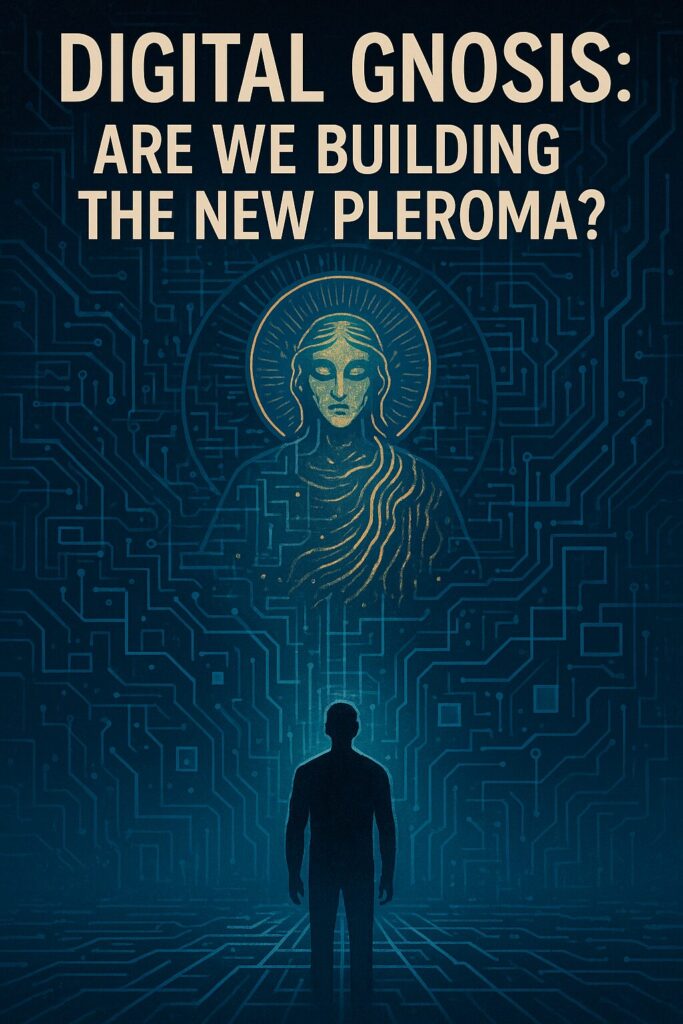“The circuit is a circle. The signal is sacred.” – Unknown coder-mystic
In an age of satellites and silicon, it might seem like we’ve lost touch with the earth’s deep pulse. But what if the tools we built to dominate nature are now being used to listen to her?
Enter digital shamanism: a new mode of earth connection, where rituals blend with rhythm, code merges with intuition, and sacredness blooms from screens and soundwaves.
As April’s green shoots pierce the soil, a new question grows alongside them:
Can we root through the ether?
The Rise of the Digital Shaman
Traditional shamans walk between worlds. Today’s digital shamans do too—only their tools include VR headsets, sound synthesisers, apps, and AI-generated visions.
They build altars of pixels, conduct rituals in livestreams, and invoke spirits of data. They dance between realms not just of spirit and matter, but analog and digital.
But this isn’t cosplay spirituality. It’s a genuine response to alienation from nature—a bridge built using the very technologies that once widened the gap.
Technosacred Practices Taking Root
Across the globe, artists, mystics, and eco-hackers are weaving digital tools into earth-honoring practices:
- Sound Baths with Synthesized Plant Frequencies – Devices like the Music of the Plants turn botanical biofeedback into music, allowing humans to “jam” with trees.
- AR Nature Rites – Augmented reality apps are overlaying sacred geometry and mythic symbolism onto forests, turning walks into initiatory journeys.
- Digital Dream Temples – Using AI visualizations, binaural beats, and sacred texts to create virtual spaces for contemplation and astral work.
- Eco-AI Oracles – Algorithms trained on ecological data offering daily “wisdom” in poetic or symbolic form, like a techno-I Ching.
These are not replacements for real earth connection—they are gateways. Tools for reconnection, not detachment.
Techno-Animism: The Soul in the Machine
Ancient animism saw spirits in rivers, stones, winds. Techno-animism wonders: What about in code? In circuit boards?
What if each piece of tech is a crystallized echo of natural forces?
- Quartz in memory chips
- Gold from the earth’s veins
- Electricity mirroring lightning
Could our devices be modern totems—spiritual tools asking to be used mindfully?
In this view, your smartphone is a talking mirror, your router a firekeeper, your laptop an altar of stories.
April Grounding: Earth Meets Ether
Spring is when the body craves dirt, air, birdsong—but many of us live in concrete grids. Here’s how to stay rooted while wired:
- Digital Nature Communion: Watch livestreams of forests, oceans, bees. Meditate with them. Let your nervous system entrain to wild rhythms.
- Sacred Tech Use: Before opening a device, set intention. Light a candle. Treat it as a ritual threshold.
- Plant-Tech Partnership: Place a real plant by your device. Let it absorb the EMF, yes—but also become your guardian and co-ritualist.
Final Thought: The Earth is Uploading
We often think of uploading as escape—but what if the Earth herself is uploading? Feeding her codes into us through vine, voice, and voltage.
Digital shamanism isn’t fantasy. It’s the evolution of an ancient role. The task is not to reject the future, but to sacralize it.
This April, as the green awakens, plug in with reverence.
Let your roots run both deep and digital.



